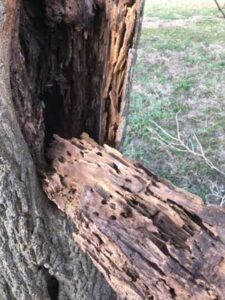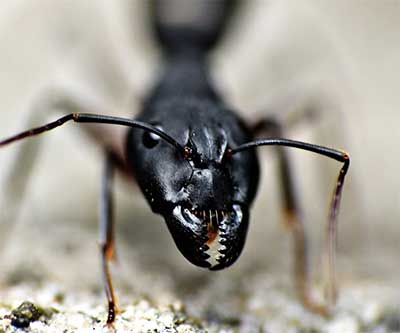With the weather in New York, owning a home can often mean dealing with black carpenter ants. Evidence of the damage these ants do can be seen in fallen trees or buried landscape throughout this state. These indicators around your home can be important when looking to prevent and eventually get rid of carpenter ants.
When grown, a colony of western black carpenter ants has roughly 10-20,000 workers, with big colonies including more than 50,000 workers. In most colonies, only one wingless queen is functioning. Swarmers will not generate until the colony has been around for at least two years. They are born the previous year and kept in the nest for the winter. The colony will release these winged ants the following year. Swarmers emerge in the eastern United States from May to August and in the western United States from February to June.
What are the characteristics of carpenter ants?
Carpenter ants receive their name from how they build their nests, excavate the wood, and create smooth tunnels within it. Carpenter ants do not eat wood; they dig and chew it to build nests. Carpenter ants range in size from 12 to 58 inches in length. Carpenter ants are commonly black, but they can also be reddish or brown.
What are the tell-tale signs of an infestation?
Aside from the presence of workers and/or swarmers, the emergence of small gaps on the surface of the wood is the sole external evidence of a carpenter ant infestation. The collection of material behind the holes is a sure sign of an ongoing infestation. Carpenter ants build smooth gallery walls that have a sandpapered look. The ants use them to discharge trash, including sawdust-like shavings, insulation fragments, and insect appendages. The ants push this debris from the active galleries. This byproduct of carpenter ants is called frass.
Carpenter ants love to consume fungus-softened wood, and they are typically linked to moisture issues, so keep a close eye out for excess moisture and soft, decaying wood around the house.
What are the habits of black carpenter ants?

Carpenter ants make their colonies in various places outside, such as tree stumps, decomposing wooden boards, old firewood, beneath stones, etc. The queen, eggs and young will be located outside in the parent colony or the main colony. Only workers, adult larvae and pupae can be found in satellite nests that extend from the central parent colony. Satellite nests emerge in the middle of the summer, both indoors and out, and do not emerge until the parent colony has matured over several years. Workers and winged ants emerge from the pupae around August on average.
Looked for winged ants!
In a process known as swarming, carpenter ants will commence mating flights. When temperatures and ample sunshine signal that it’s time to swarm, winged males are usually the first to emerge. The male emits a pheromone that encourages the female to depart her nest if the conditions are favorable. The first appearance of winged males in residences is generally a source of concern for homeowners, indicating that ants are there. Otherwise, when the winged forms are agitated, a rustling sound can be heard from wall gaps or wood where the nest is, indicating the presence of a carpenter ant nest indoors.
Carpenter ants eat insect honeydew, plant and fruit liquids, insects and other arthropods as their primary food sources. They will consume sweets, eggs, meats, cakes and grease on the inside. The workers will go up to 300 feet out from their colony to hunt. Although some workers work throughout the day, most of their work occurs between nightfall and dawn.
What is their habitat like?
Carpenter ants make their nests in various places outside, including dead trees, firewood and gardens. To thrive, they require a steady supply of water. Carpenter ants will gain access to your home via moist, damaged wood.
Do black carpenter ants pose any threat to buildings?
Carpenter ants do not eat wood, but they damage it by constructing their nests. They can present a severe property threat if they gain access to a structure. If you see carpenter ants, call a registered pest control specialist to plan an ant extermination or control strategy, including how to get rid of carpenter ants.
How do you eliminate carpenter ants?
Carpenter ants must have access to water to survive. Remove any moisture or stagnant water sources to keep brown, red or black carpenter ants out of your home. Be sure to prune large trees and other plants away from the house. Pests sometimes use these branches to gain access to your property. Check for any cracks or small gaps at the bottoms of doorways or round frames. A silicone-based caulk will seal any openings. Also, keep firewood and construction items out of the house. Carpenter ants prefer to make nests in wood stacks.
The risk of replacing windows, doors, roofing, and sheathing in a home is a cost most homeowners aren’t willing to risk. When dealing with wood-destroying insects like carpenter ants, most homeowners are inclined to contact a professional ant exterminator. Many of our clients will eliminate what’s inside the structure as an immediate response to finding carpenter ants inside the home. Second, they make a strategy to reduce future risk by implementing an integrated pest management plan on the outside. This plan includes eliminating brush, groundcover, trees and creating a year-to-year plan to protect the exterior. This strategy allows homeowners to reduce future infestations and ultimately eliminate damage to their home’s most significant investment.


